40 years of air pollution control
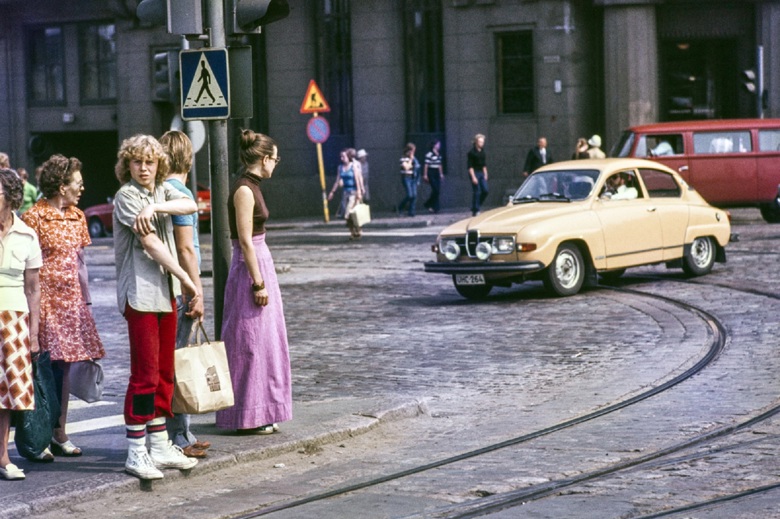
2023 was the 40th anniversary of HSY’s air quality monitoring. HSY and its predecessor YTV have been monitoring the air quality in the Helsinki metropolitan area since 1983.
The Helsinki Region Environmental Services Authority HSY takes care of air quality monitoring in the Helsinki metropolitan area and elsewhere in Uusimaa. In addition, our responsibilities include communicating about air quality as well as research, planning, training and education duties related to air pollution control. We carry out air pollution control work in extensive cooperation with the cities as well as research and expert institutes. In this way, we have contributed to the improvement of air quality and the effectiveness of measures in the Helsinki metropolitan area together.
Air quality monitoring began in Helsinki in the second half of the 1970s with the monitoring of sulphur dioxide (SO2), total suspended particles (TSP) and lead (Pb). Initially, air pollution control was based on healthcare legislation and it was handled by the health authorities.
The first Air Pollution Control Act entered into force in Finland in 1982. At that time, the YTV member cities decided unanimously that the monitoring, planning, training and education duties required by the new Air Pollution Control Act would be centralised to the Helsinki Metropolitan Area Council YTV. Air pollution control tasks were also recorded as such in the YTV Act that entered into force in 1985.
The air quality monitoring of the City of Helsinki was delegated to YTV as of 1983. At that time, a team of two people and the monitoring equipment used by the city were transferred from the city to YTV. During the 1980s, YTV expanded the air quality monitoring to include the other cities in the metropolitan area in addition to Helsinki, which improved the regional coverage of the monitoring and increased the number of monitoring sites.
Coming into the 1990s, the air quality monitoring network was diversified by adding monitoring to traffic environments. The concentration monitoring of thoracic particles (PM10) was developed by introducing continuous analysers. International studies showed fine particles to be very harmful to health, and the monitoring of fine particles (PM2.5) was started in the Helsinki metropolitan area in 1997 (see figure below).
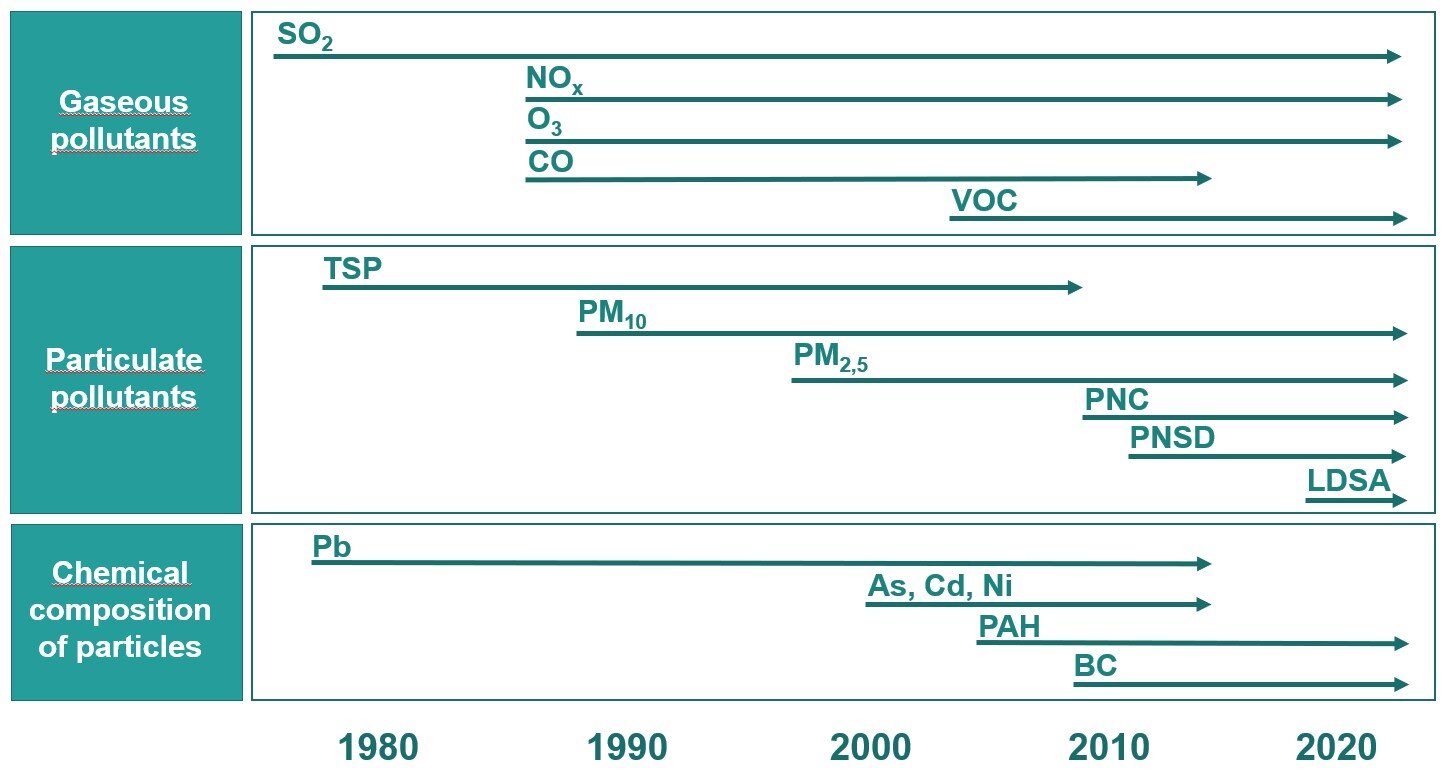
Today, HSY’s Air Quality Unit monitors air quality in real time at both permanent and mobile monitoring sites. The permanent sites provide information about the long-term development of air quality and the mobile sites about the air quality in different types of areas, e.g. in detached housing areas or along main roads and streets. Air quality is also monitored using separate indicative sensors and passive nitrogen dioxide (NO2) samplers.
Over the years, the monitoring of gaseous pollutants has diversified and the monitoring of particles has evolved to include smaller and smaller particles. Other monitoring methods, such as dispersion modelling and air quality forecasts, have also been introduced to support monitoring.
Our map service (in Finnish) provides the capital’s nitrogen dioxide monitoring sites through the years as well as the annual averages of nitrogen dioxide since 2004.
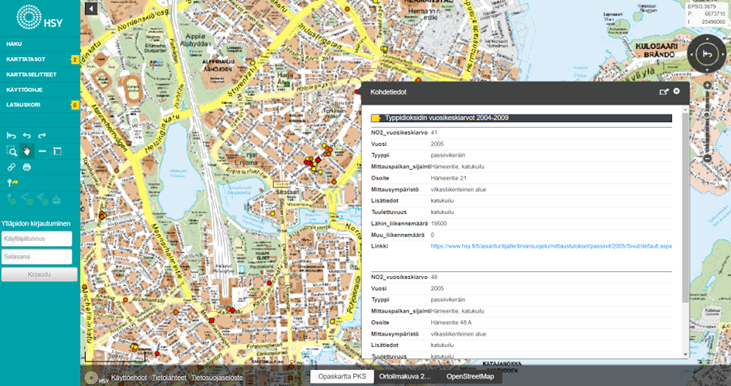
How has the air in the Helsinki metropolitan area developed over the years?
In the early days, the air quality in the Helsinki metropolitan area deteriorated more often than it does now. Local pollution was caused by property-specific oil and coal heating, energy generation and traffic.
Sulphur emissions, in particular, have fallen sharply. In the late 1980s, the focus of air pollution control began to shift from sulphur dioxide monitoring to traffic exhaust gases (nitrogen oxides, carbon monoxide and particles).
The fall in sulphur dioxide concentrations has been influenced by:
- The decline in property-specific oil and coal heating and the transition to district heating
- The construction of desulphurisation equipment at power plants, the switch to low-sulphur fuels and the increasing use of natural gas
- The reduction in sulphur dioxide emissions from car traffic, especially in the early 1990s
- The tightening of emission standards for shipping in 2010 and 2015, thanks to which the monitoring at ports shows a clear decrease in sulphur concentrations even in the 2000s
Over the decades, road traffic emissions have seen a significant decrease in nitrogen dioxide concentrations, which have fallen by approximately 80 per cent in the Helsinki metropolitan area between 1990 and 2021. This is explained by the development of the car fleet to be lower in emissions. In recent years, the accelerated electrification of the car fleet in the Helsinki metropolitan area has contributed to the reduction in emissions. In 2020, 15 per cent of the cars registered in the Helsinki metropolitan area were fully electric and 20 per cent were hybrids. The renewal and electrification of the Helsinki Region Transport (HSL) bus fleet also play a significant role in the decrease in exhaust emissions in the Helsinki metropolitan area. In 2018, electric buses accounted for one per cent of HSL’s bus service mileage, i.e. kilometres driven; in 2023, this share is 34 per cent.
Today, we are generally breathing clean air in the Helsinki metropolitan area and elsewhere in Uusimaa. Emissions that reduce the air quality have been brought well under control over time. The current problem is mainly street dust, which can at times lead to poor or even very poor air quality in the vicinity of busy streets or roads.
The air quality in the Helsinki metropolitan area and Uusimaa is also reduced by small-scale wood burning, especially in detached housing areas. The amount of wood used in detached houses increased in Finland from the 1980s onwards, until it began to level off in the 2010s and emissions from small-scale wood burning started to decline as well. According to HSY’s resident surveys, the amount of wood used in detached houses will remain unchanged or increase slightly in the Helsinki metropolitan area. At the same time, the community structure of detached housing areas is growing denser, which may exacerbate the smoke nuisance caused by wood burning.
The exhaust gas episode of 1995 gave rise to the air quality customer service
In 1995, there was a severe air quality episode caused by traffic exhaust gases in the Helsinki metropolitan area in the days between Christmas and New Year. Concentrations of nitrogen dioxide from traffic reached very high levels on several days due to unfavourable weather conditions. Up to that point, the air quality in the Helsinki metropolitan area had been monitored mainly during office hours, but the episode created a need to monitor the air quality more closely also on weekends and holidays. This saw the establishment of the air quality customer service, which operates in HSY’s Air Quality Unit and now serves residents, authorities and the media under normal conditions on weekdays during office hours.
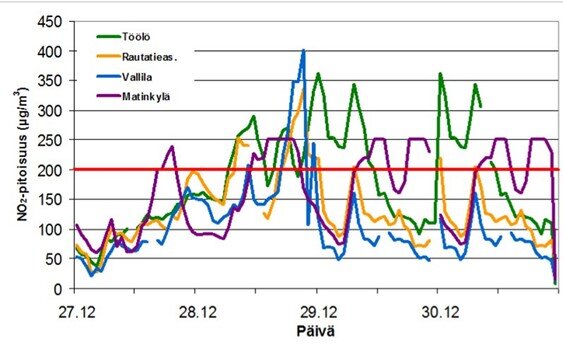
Long-range transport of air pollutants then and now
Wildfires have taken place regularly outside Finland’s borders in springtime, causing smoke nuisance also in the Helsinki metropolitan area.
In the spring of 2006, there was a prolonged period of long-range transport due to slash-and-burn clearing and wildfires in Eastern Europe. In addition, a fire broke out in the VR warehouses in the centre of Helsinki in May, spreading smoke into the air of downtown Helsinki for hours.
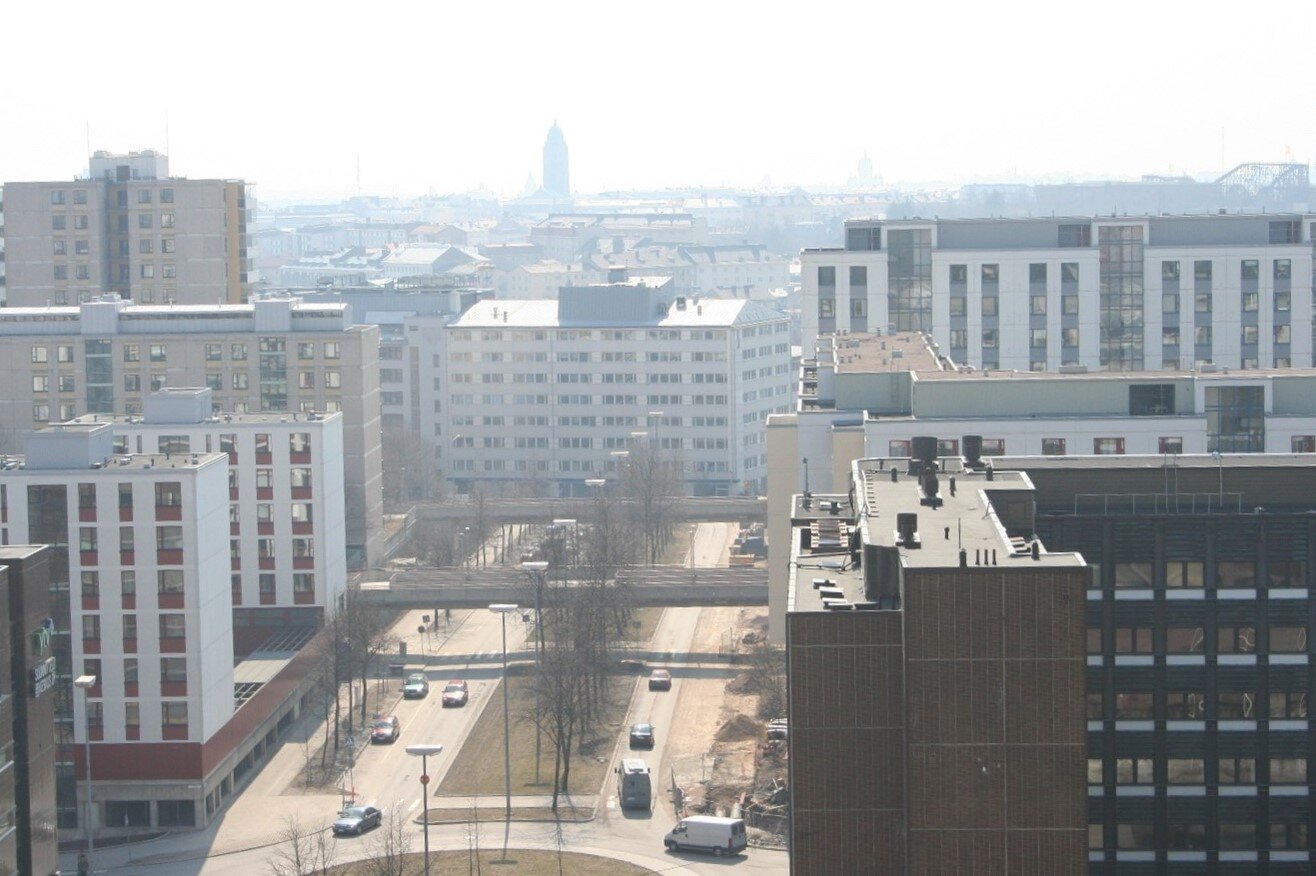
Smoke from long-range transport over Helsinki in May 2006.
The worst smoke nuisance caused by wildfires in the Helsinki metropolitan area occurred in August 2006. A plume of smoke crossed the Gulf of Finland from the southeast, as a result of which the fine particle concentrations in Helsinki rose to more than 20 times the normal level in August. The smoke was very dense in the Helsinki metropolitan area at times, prompting concerned residents to contact the authorities. HSY’s air quality customer service was also quite busy.
As a result of the exceptionally difficult situation in the spring and summer, the City of Helsinki drew up an action plan for severe smoke episodes and strong long-range transport, and fine particles were added to the air quality index developed by HSY (YTV), which is used in air quality monitoring to this day.
After 2006, wildfires in Russia reduced the quality of the breathing air in the Helsinki metropolitan area significantly also in the summers of 2010 and 2012.
Long-range transport is somewhat visible in the air quality of the Helsinki metropolitan area even today. This is primarily due to the normal transport of fine particles caused by traffic, energy generation, industry and wood burning in Central and Eastern Europe. Occasional adverse effects are also caused by wildfires. Lessening long-range transport can be influenced mainly through international legislation, which requires long-term work.
Communication and stakeholder work increase awareness of air quality
In addition to stricter statutory requirements, residents’ interest in air quality data has also increased over time. YTV/HSY has responded to these needs by, for example, establishing the first air quality website back in 1996. Since then, real-time air quality data and the air quality index for the Helsinki metropolitan area have been available online to everyone. The content of HSY’s current air quality website is extensive, serving both residents and professionals. In addition to the website, air quality data is published daily in the media, nowadays especially in electronic media. There is a growing demand for real-time geographic information that describes air quality in a way that is easy to grasp.
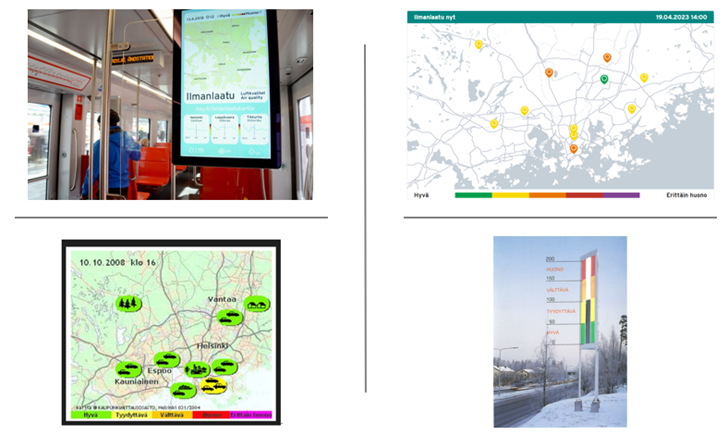
In addition to residents and the media, important stakeholders include those working in land use and transport planning, universities, research institutes and ministries as well as the air pollution control authorities of other countries.
Outlook for the future
A lot of work has been done in Finland and the Helsinki metropolitan area to improve the air quality, but the efforts continue and the requirements are still getting stricter. Understanding of the adverse health effects of air pollutants has increased and challenges are being solved, for example, within the framework of the National Air Pollution Control Programme. Traffic, street dust and wood burning will continue to be important themes in air pollution control work going forward as well.
Although the concentrations of air pollutants are below the limit values in Finland, they are still the most significant environmental health risk. Air pollutants cause adverse health effects even at low concentrations. HSY has engaged in high-quality research cooperation for decades, developing the air quality monitoring system and communications in the Helsinki metropolitan area and producing information for the needs of urban planning and air pollution control work.
Progress has also been made in the development of measuring instruments, especially when it comes to the monitoring of particulate air pollutants. Thanks to new technologies, it is possible to monitor ever smaller, even ultrafine particles, as well as the number of particles. Monitoring small particles is important because they are harmful to health. In terms of air pollution control, it is necessary to continue developing sensor technology that enables more and more precise monitoring of air quality.
People’s awareness of air quality can be increased by making air quality data more available and interesting. The aim is to provide real-time information on local air quality and forecasts for the needs of residents, authorities, institutions and companies.
Air pollution control requires active cooperation between various parties to keep the air we breathe clean for everyone also in the future.

Read more:
- HSY's current air quality monitoring sites: https://www.hsy.fi/en/air-quality-and-climate/air-quality-now/air-quality-monitoring-sites-in-the-helsinki-metropolitan-area/
- Health effects of air pollutants: https://www.hsy.fi/en/air-quality-and-climate/health-effects-of-air-pollutants/
- Concentrations of air pollutants: https://www.hsy.fi/en/air-quality-and-climate/air-quality-now/concentrations-of-air-pollutants/